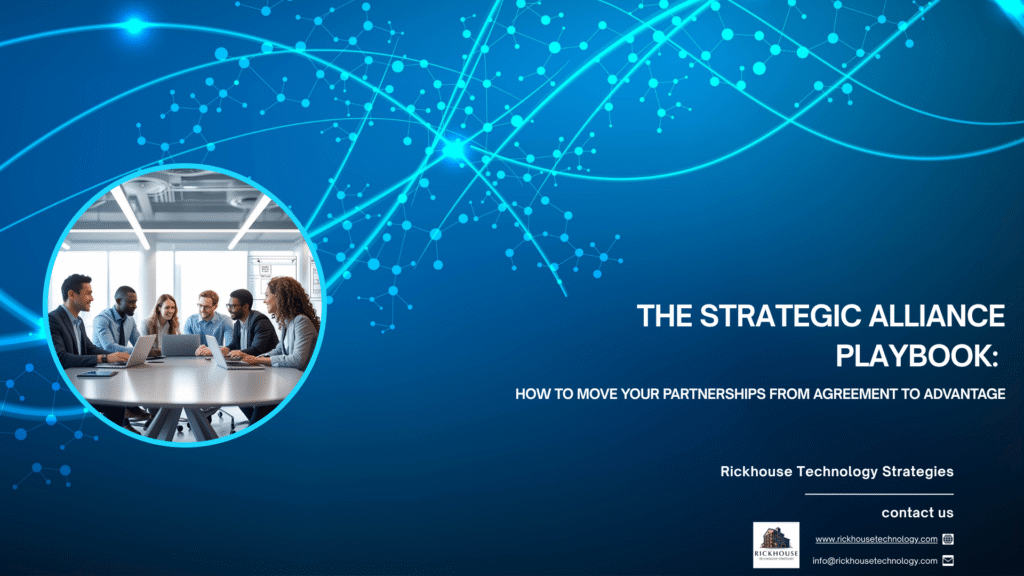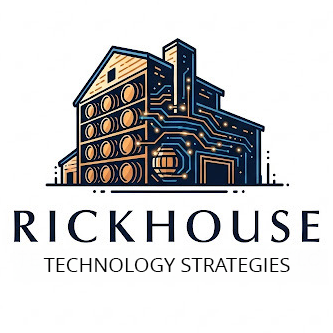
After spending the past decade at one of the world’s largest IT services companies, I’ve had a front-row seat to a powerful, recurring phenomenon: when strategic alliance partnerships are executed correctly, everyone wins. The results are consistently higher close rates, dramatically decreased sales cycles, and healthier margins. I’ve also experienced firsthand the immense work that goes into building these successful alliances and know that signing the partner agreement is only where the real work begins.
In today’s hyper-complex technology landscape, the path to delivering transformative outcomes is paved with collaboration. For any IT services company to succeed, forming strategic alliances with tech giants like AWS, Microsoft, Salesforce, ServiceNow, and Cisco is table stakes. These formal agreements are foundational—they grant legitimacy within the ecosystem, provide access to critical training and certifications, and open the doors to financial incentives and marketing programs. But this is a two-way street; the tech giants also cannot go at it alone. They depend on their service provider partners to develop industry-specific use cases, solve the clients’ biggest business challenges, and ultimately bring their technology to life. These formal alliances are not, in themselves, a strategy for victory. For both sides, they are merely the price of admission.
The Hunting License: Why Formal Agreements Are Just the Start
I’ve learned to think of a formal partnership agreement as a license to operate—or better yet, a license to hunt. It’s the essential, non-negotiable ticket that gets you into the game, proving you have the basic qualifications. However, the companies that consistently outperform the market are those that understand this license is not a guarantee of success. They know how to turn that permission into a tangible, repeatable advantage in the field. They move beyond the boardroom handshake and press release to build a living, breathing framework for success based on a shared go-to-market strategy, profound trust, mutual accountability, and an unwavering commitment to the customer.
From the Boardroom to the Field: Where Partnerships Come to Life
The real engine of a successful alliance is not the corporate strategy document; it’s the kinetic energy of collaboration between the field sales teams. This is where the high-level vision set by the alliance teams is translated into tangible revenue. This requires a deliberate, focused, and often gritty effort to bridge the cultural and operational gaps between two distinct organizations.
The most successful partnerships I’ve seen are built on a simple, powerful, and repeatable process:
- Building 1:1 Relationships: Before any field-level strategy can be discussed, the individual sellers from both organizations must connect on a human level. It’s about moving beyond email introductions and formal video conference calls to building genuine rapport and professional trust. This is the bedrock of all future collaboration, turning a faceless corporate entity into a trusted colleague.
- Identifying Strategic Targets: With relationships established, the joint teams can get to the real work. This means sitting down together—often for hours and in person—to identify and qualify strategic target markets and clients where their combined offering creates an undeniable, market advantage. It’s a proactive and disciplined search for opportunities where 1+1 equals 3.
- Whiteboarding the GTM Strategy: Once a target market and clients are in sight, the teams must jointly whiteboard the go-to-market strategy. This is a creative and critical session where they architect the compelling “better together” narrative and craft the marketing language to support it. They dissect the client’s problem from every angle, meticulously define how their integrated solution solves it, and assign crystal-clear roles and responsibilities for every stage of the sales cycle, from initial outreach to final proposal.
The “Better Together” Story in Action
Throughout my career, I’ve seen this disciplined, field-level collaboration lead to landmark wins. I saw this power firsthand when tackling the human experience of interacting with large institutions. At a former employer, one of the most impactful partnerships I was part of involved working with 𝐒𝐚𝐥𝐞𝐬𝐟𝐨𝐫𝐜𝐞 to transform a major city’s 311 contact center. The city didn’t need another CRM; it needed a more responsive, empathetic relationship with its residents. The joint team I worked with approached them with a unified vision, born from a whiteboard session, to create a seamless citizen experience that rebuilt trust.
Similarly, another project I was involved in with 𝐒𝐞𝐫𝐯𝐢𝐜𝐞𝐍𝐨𝐰 addressed the acute frustration of one of the nation’s largest school districts in managing their robust 1:1 device program and ensuring that students and teachers were equipped to learn.
This collaborative model proved just as relevant for hardware-centric partnerships as it was for software and cloud. My work with 𝐂𝐢𝐬𝐜𝐨 provided powerful examples of community transformation. In one major city, my team focused on public safety, combining Cisco’s advanced networking with our analytics and integration capabilities. The joint solution could intelligently identify public safety threats in real-time, such as wrong-way drivers on roadways or unexpected crowds gathering, allowing for faster emergency response. In another instance, I was part of the team that helped what was once one of America’s least connected towns leverage Cisco’s technology to become one of the most connected, creating a robust digital infrastructure that became a catalyst for economic growth and improved quality of life.
This model also applied to foundational enterprise challenges. My experience on 𝐀𝐖𝐒 mainframe modernization projects is a prime example. These were not simple migrations; they were high-stakes, complex endeavors involving decades of legacy code and business-critical applications. The “better together” story our teams crafted combined our deep expertise in legacy systems and complex application rationalization with the power and scalability of the AWS cloud. Together, we could de-risk the entire process for clients, creating a phased, manageable roadmap to move them from a costly and inflexible past to an agile and innovative future. Each success was a direct result of meticulous joint planning and the trusted 1:1 relationships between our architects and theirs.
The Engine of Success: Trust and Collaboration
These stories of success are all powered by the twin engines of trust and collaboration. A partnership framework on paper is a static, useless document without the human element. Trust is forged in the trenches—in those intense joint strategy sessions, over lunch or cocktails discussing a deal’s sticking points, and by consistently, unfailingly delivering on promises made to each other. Collaboration is the active process of channeling that trust into joint planning, shared execution, and mutual success.
When your sellers and your partner’s sellers view each other as trusted co-advisors, the entire dynamic shifts. The client doesn’t see two vendors trying to make a sale; they see a unified, formidable team dedicated to solving their most complex business challenges. This is the ultimate differentiator. Ultimately, the goal is to transform every strategic alliance from a passive agreement into an active, unbeatable advantage. It requires an unwavering commitment to move beyond the boardroom, empower your field teams to build real relationships, and relentlessly focus on crafting value that you can only deliver together. That is the playbook for a partnership that doesn’t just compete, it dominates.
About the Author
Noel Hara is the Founder of Rickhouse Technology Strategies, a boutique consultancy dedicated to helping growth-stage technology companies build and execute world-class go-to-market and partnership strategies. Leveraging decades of experience from leadership roles within both large, global IT service providers and agile, growth-stage companies, Noel has a proven track record of opening new markets, building strategic partnerships, and scaling businesses. He helps his clients navigate the complexities of establishing market relevance and being viewed as industry thought leaders. Rickhouse Technology Strategies acts as a trusted advisor, providing the strategic frameworks and hands-on guidance necessary to turn innovative technology into a market-dominant force.

Leave a Reply